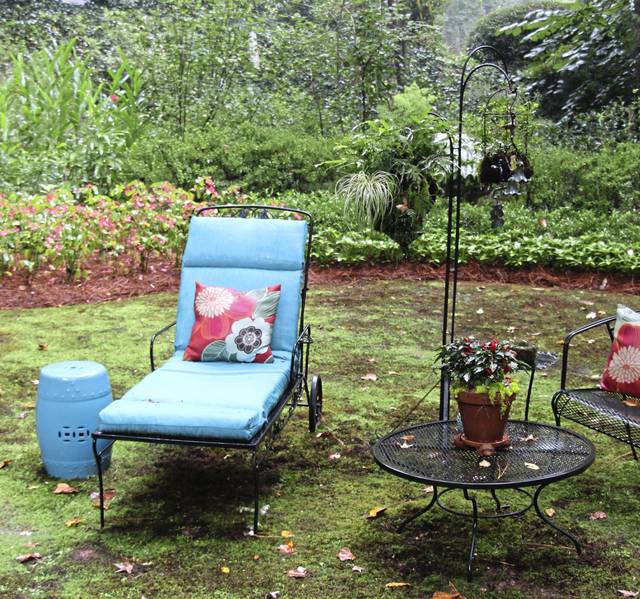https://triblive.com/lifestyles/jessica-walliser-columns/heres-how-to-grow-a-lawn-beneath-shade-trees/
Here's how to grow a lawn beneath shade trees

Homeowners with large trees and a lot of shade may find themselves having trouble getting grass to establish. Very few turf grass species thrive in shady conditions. Plus, turf grass growing under a large tree is in constant competition with the tree for water and nutrients. The ability of the extensive root system of a large tree to draw in water far surpasses that of shallow-rooted turf grass. As a result, the lawn suffers. Bare patches often appear, and weeds and moss may take over.
If you struggle to grow a healthy lawn in heavily shaded conditions, I’d like to present you with some options.
First and foremost, if moss has taken over your lawn due to large amounts of shade, consider letting it be and cultivating it as a garden plant instead of trying to battle it. Moss is green year-round, easy to maintain and if it’s already thriving in the area, why not run with it?
Another option is to remove the patchy lawn and cover the area with a 3- 4-inch layer of shredded bark mulch. If you want color in the area during the summer months, place several large pots of shade-loving annuals on top of the mulch to add some interest and a touch of color.
There are also some beautiful perennials that will perform fairly well under such shady conditions, but not just any shade-loving perennial will do. Many are subject to competition with tree roots. However, perennials such as Epimedium, ferns, wood Phlox, Solomon’s seal, bleeding hearts, Corydalis lutea, lady’s mantle, Astilbe, Brunnera and hostas all do quite well beneath the canopy of a large tree and are easy to find on the market. There are many more beautiful shade-loving perennials that perform well beneath large trees, and any good local nursery can offer you further options.
If you insist on trying to grow grass under these heavily shaded conditions, you’ll need to look for blends of fescues. Fescues are the most shade tolerant of lawn grasses, but they don’t have the look of sunny grass blends that frequently contain a mix of Kentucky bluegrass and perennial rye with a small amount of fescue tossed in the mix.
Chewings fescue is the variety touted by many to be the most shade tolerant of all the grasses, so reseeding any shady areas with this grass variety should enable you to grow a lawn in even the densest of shade. However, do be aware that you’ll still need to regularly irrigate the lawn area and the texture of chewings fescue isn’t going to “match” the rest of your lawn.
Prior to planting any type of grass seed, regardless of whether you’re growing in sun or shade, plan to test your soil to ensure the fertility and soil pH is suitable for grass growth. Improper pH and inadequate soil fertility are another reason why turf grasses may fail. The only way to know how to remedy that situation is to take a soil test. Soil test kits are available from the Penn State Extension Service office in your specific county.
You can find your county’s office here: extension.psu.edu.
The tests are easy to conduct and highly accurate. Plus, the results come with recommendations for remedying any issues you may have.
Copyright ©2025— Trib Total Media, LLC (TribLIVE.com)
